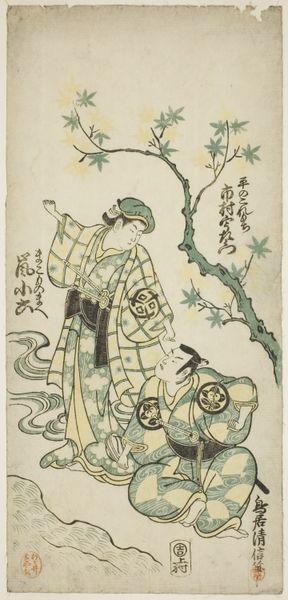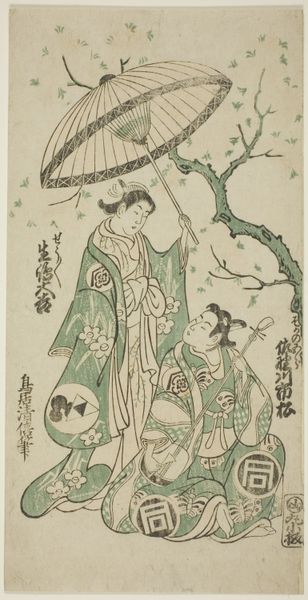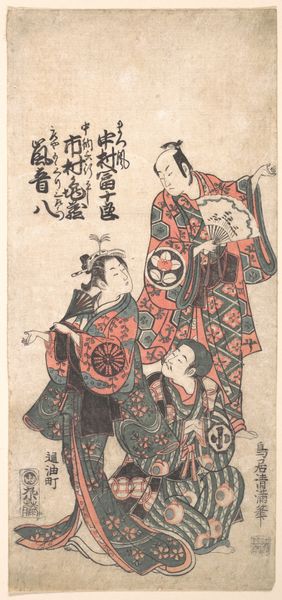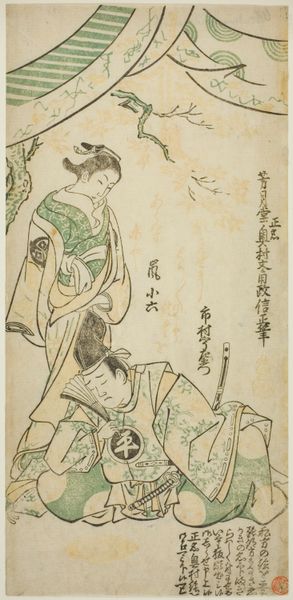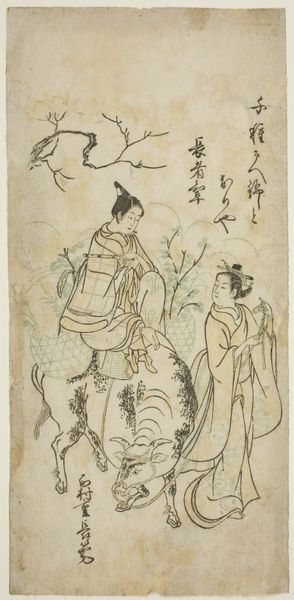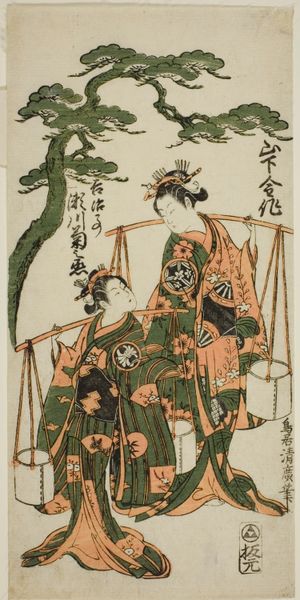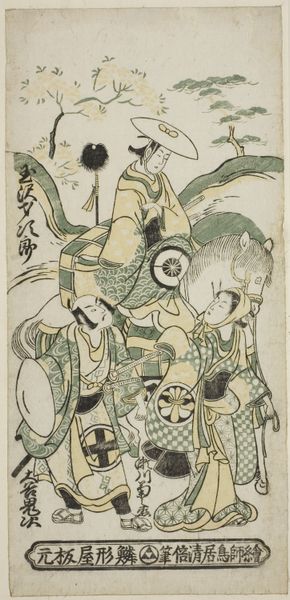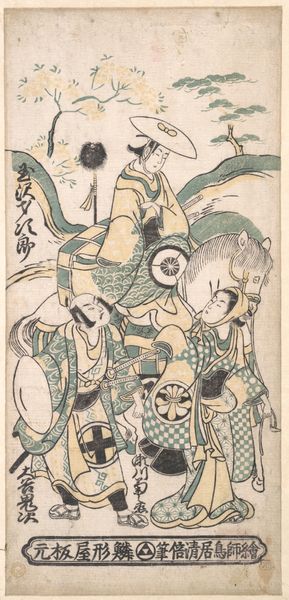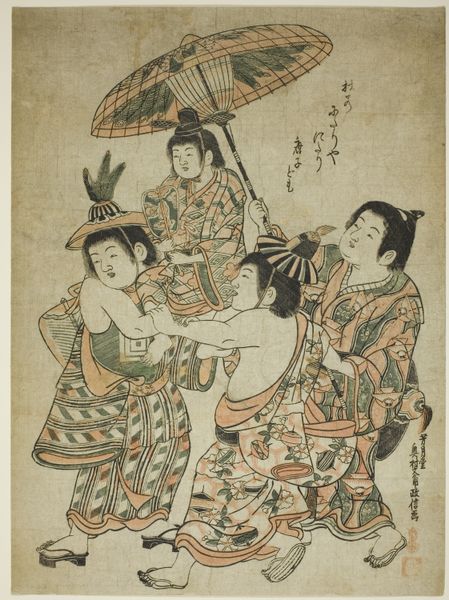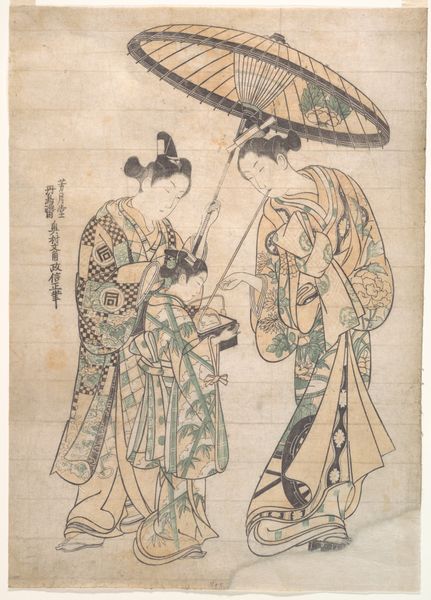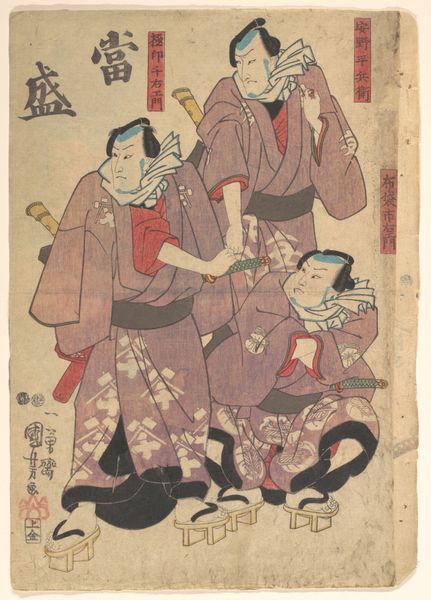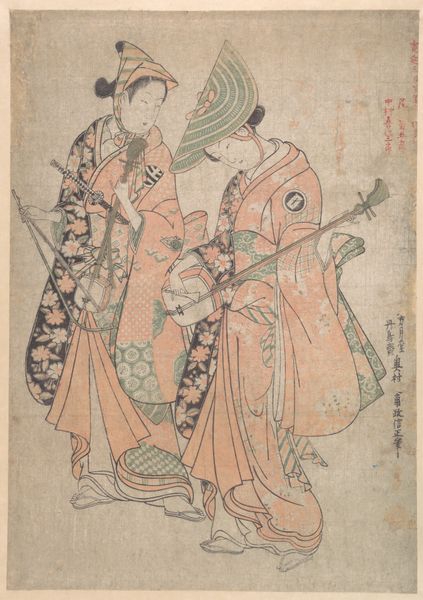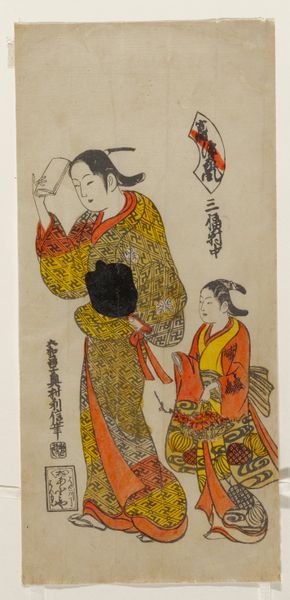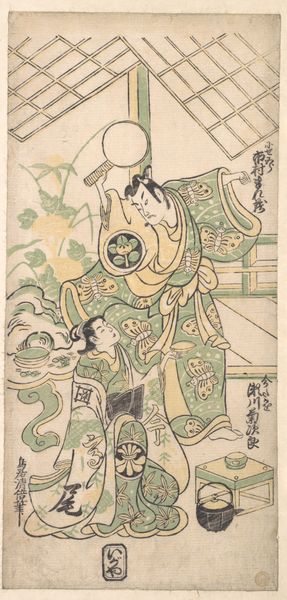
The Actors Otani Ryuzaemon II as Kajiwara Genta and Arashi Tominosuke I as Oiso no Tora in the play "Tamagushi Yosooi Soga," performed at the Ichimura Theater in the first month, 1747 1747
0:00
0:00
print, woodblock-print
# print
#
asian-art
#
ukiyo-e
#
figuration
#
woodblock-print
#
genre-painting
Dimensions: 12 1/4 × 5 1/2 in.
Copyright: Public Domain
Curator: This striking print is by Nishimura Shigenaga, dating from 1747. It captures actors in a Kabuki play performed at the Ichimura Theater. The title, rather a mouthful, is "The Actors Otani Ryuzaemon II as Kajiwara Genta and Arashi Tominosuke I as Oiso no Tora in the play "Tamagushi Yosooi Soga."" Editor: My immediate impression is of contained energy. The figures are dynamic within a narrow vertical space, emphasized by those columns of elegant script flanking the figures. It looks like a very involved production using minimal palette and delicate detail. Curator: Exactly. Ukiyo-e prints like this were mass produced using woodblock techniques. The collaborative process is fascinating – the artist created the design, then specialized block cutters and printers brought it to life. This points to a fascinating system of production and labor supporting Kabuki theater. The consumption of these prints was an important form of advertising the plays. Editor: Beyond advertisement, though, these figures carry enormous symbolic weight. Kabuki itself, with its stylized gestures and elaborate costumes, serves as a powerful vehicle for transmitting social and moral values. Note, for example, the subtle hand gestures. Are they conveying the relationship between these characters, hinting at power dynamics and alliances within the play's narrative? The objects—the fan, the what seems to be a flower—hint at meaning. Curator: And those costumes! The patterns and fabrics depicted, likely expensive in reality, speak to the opulent culture surrounding the theater and its patronage. We must not overlook the impact of social status being so clearly advertised to audiences consuming Kabuki and its printed ephemera. These productions are both deeply artificial and indexical of society and politics. Editor: Agreed. And even the actors themselves accumulate symbolic power, becoming embodiments of specific roles and archetypes. Their continued depiction in prints like this reinforces their cultural significance, blurring the lines between the actor and the character they portray. Do you agree the style is interesting: at once refined and slightly crude. Curator: Yes. Woodblock is a technology enabling a particular aesthetic and allowing these beautiful but cheap items to proliferate in the mid-18th century. Editor: Looking at this today, I'm struck by the enduring power of visual storytelling and its capacity to connect us with past eras. Curator: Indeed, a valuable testament to labor, commercial exchange, and dramatic production across generations.
Comments
No comments
Be the first to comment and join the conversation on the ultimate creative platform.
